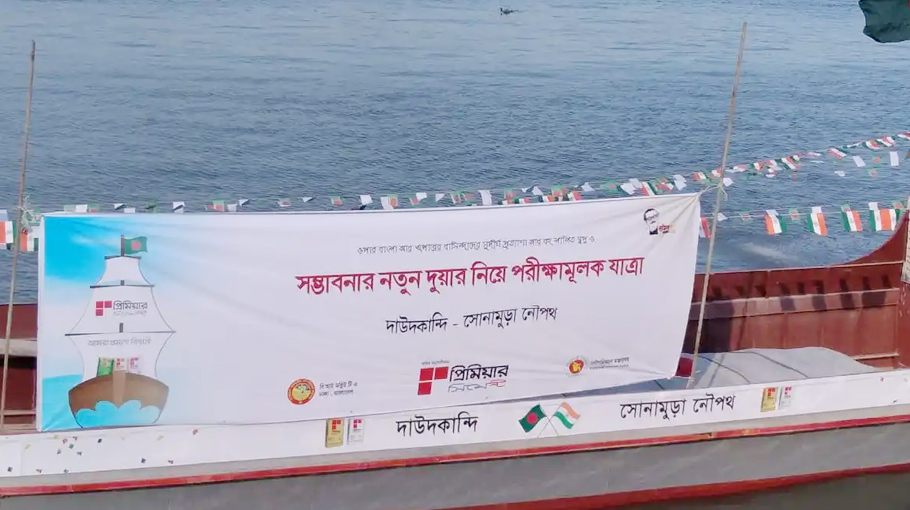Move to boost waterway trade with India

The government has undertaken a river dredging project to boost exports and imports with neighboring India by ensuring a waterway route.
As part of its move, the Gumti River in Cumilla will be dredged to increase exports and imports to Arunachal, Assam, Manipur, Meghalaya, Mizoram, Nagaland and Tripura in north-eastern India.
Experimental shipping trade has already started with these states of India through the Gumti River. But due to the navigational crisis, this trade is not seeing success without dredging of the Gumti River.
Therefore, the Ministry of Shipping had sent a development project proposal (DPP) worth Tk 288 crore to the Planning Commission for river dredging.
The government-funded project will be implemented from January 2022 to June 2025.
The Ministry of Shipping has taken such an initiative under the navigable recovery project of Gumti River.
That is why, the whole process is almost at the last stage, an official of the Ministry of Shipping said, adding that the project will be presented to the Executive Committee of the National Economic Council or ECNEC meeting soon.
In this regard, Mohammad Mezbah Uddin Chowdhury, Secretary of the Ministry of Shipping, said, “Waterways mean cost savings in transporting goods. If we dig or repair the waterways, on the one hand it will be possible to transport goods at low cost and on the other hand it will save time. We will dig Gumti River as a part of this.”
This will facilitate the export and import of goods to other states of India including Tripura, he said adding that, this will benefit both countries.
We have brought all the work to the final stage, he mentioned. He hopes they can start the project implementation work soon.
According to the Ministry of Shipping, the Gumti River originated in India and entered Bangladesh through the Jagannathpur Union of Cumilla Sadar Upazila.
After that it crossed the 150 km spiral path through Cumilla's Sadar, Debidwar, Companiganj and fell into the Meghna river in the Shapta area of Daudkandi.
The Gumti River originates from a place called Dumur in the north-eastern highlands of the Indian state of Tripura.
The river is 93 km long from Sonamura in Sepahijla district of Tripura to Daudkandi in Cumilla, Bangladesh.
89.5 km of this waterway is in Bangladesh and the rest is in India. At present, cargo ships weighing a maximum of 50 tons can handle this waterway.
If the waterway is excavated, it will be used as one of the direct import-export routes between Bangladesh and Tripura.
The Ministry of Shipping claims that if the project is implemented, large cargo ships of 200 to 400 tons will be able to operate on this route.
However, transporting goods from Kolkata, Delhi or other regions to these states takes a lot of time and money.
In this case, transporting goods to the north-east using Bangladesh's water, land and railways saves both time and expense.
With that in mind, goods are being transported by sea to various states in the North-east under naval protocol and connectivity with Bangladesh, but to a lesser extent.
A senior official of Bangladesh Inland Water Transport Authority (BIWTA) said that the development of this waterway will increase the transportation of goods in different areas of Cumilla district.
Besides, the Gumti waterway will play an important role in exporting goods, especially cement to other states of India including Tripura.




